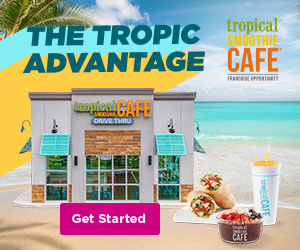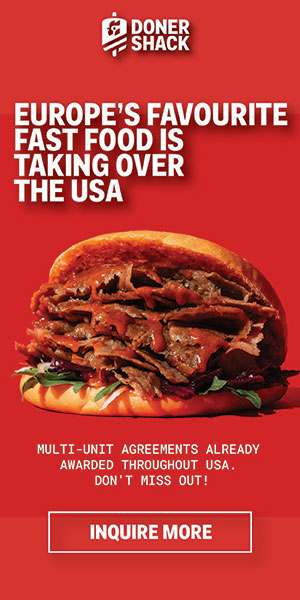The Site Selection Process Has Changed

Site selection, like everything else in the restaurant industry (and world), has completely changed since the start of the pandemic. Gone are the days of building brand-new, massive restaurants adjacent to entertainment centers for the best results. Now, second-generation, smaller sites chosen using state-of-the-art data are the way of the future and leading to higher-volume restaurants.
As the restaurant industry enters this new world of site selection and all the challenges that come with it, here are the top tips for franchisees searching for the right location to build or open their business – and for the franchisors working with them to find it.
Bigger isn’t always better
In today’s world, large square footage isn’t the go-to advantage anymore. Some sites now work better as a grab-and-go location, as opposed to a traditional dine-in restaurant. Now is the time to reevaluate areas and consider what type of real estate meets your restaurant’s modern-day needs. As consumers continue to embrace drive-thrus and pickup, I advise that you look at sites with drive-thrus, pickup windows, and smaller dining rooms. Unfortunately, these sites are the hardest to find because everyone today wants them. You’re going to have to do some work to find them, but in my experience, the best diamonds are found in the rough.
Data, data, data
Look at what’s relevant from demographic data. Simple points of data such as age, family size, and income tell us a lot about our clientele and where we should open next. What’s relevant to producing high sales or high volume? No longer based on location, successful restaurants are now driven by off-premise offerings, including delivery, pickup windows, drive-thrus, and accessible parking. These offerings allow on-the-go guests to pick up food without leaving their vehicle, a luxury many grew to enjoy during the pandemic. These offerings are also attractive to third-party delivery apps, another driver of high-producing sites.
Embrace second-generation locations
Surprisingly, and despite popular belief, there is not an abundance of retail or restaurant space available. Construction took a downturn with the economy. And with investment in nonresidential structures declining, new structures ready for fast-casual restaurants are increasingly hard to find. Restaurant spaces that closed during the height of the pandemic are not suitable for traditional restaurant franchise brand sites. Because of this, there is now a need to look at second-generation spaces for new restaurants – and to embrace your ability to find different communities and gain new insights when deciding where to open a new store.
Let loyal customers guide your decisions
Loyalty apps provide us with a wealth of information about our guests. We should let these customers guide our real estate decisions. With this invaluable data at our fingertips, we leverage this first-party data about our existing loyal customer base. The merging of consumer marketing data with real estate data identifies who – and where – our customers are, helping to guide us on where new sites should open.
Along with loyalty rewards customers, third-party delivery apps are more important than ever for our business. These third-party apps need easily accessible locations for their drivers, who are on the go making multiple deliveries. In addition, visibility is more important than ever. If your restaurant is easily visible, it’s that much easier for customers to visit. Pickup windows and adequate parking are also important, as they increase accessibility and make it easier for loyal customers and delivery app drivers to visit.
Build brand awareness in concentrated areas
In newer markets, leverage the existing brand awareness you have. It would be logical to open a location nearby to an existing location, say 5 miles away instead of across town. Consider delivery as customers on delivery apps don’t necessarily know where the restaurant is, just that it’s near them. Linking delivery areas increases brand awareness in concentrated areas and puts the restaurant in a better position for success when new locations open up.
Be flexible
As everyone in the restaurant business knows, we must be flexible, and this couldn’t be truer than when it comes to site options. With fewer new facilities being built, you must have the flexibility to work with the existing construction. A site on the West Coast is going to be different from a site in the Midwest, so we shouldn’t be afraid of opening locations that aren’t identical to our other restaurants. With the restaurant landscape changing rapidly, now is the time to evaluate the importance of the dine-in space for your restaurant’s experience and how much space is really needed. Although you should be flexible, be cautious to not throw out elements essential to your restaurant’s success.
Conclusion
Although things will never be the same post-pandemic, and we can forget returning to “normal,” our industry must embrace these new challenges to continue serving our customers and meeting them where they are. I look forward to seeing the changing landscape of the industry and how sites chosen in 2022 and beyond will prioritize customer convenience unlike ever before and help us emerge from the pandemic stronger than we were before it started.
John Ramsay is Vice President of Franchise Sales for Noodles & Company and has extensive experience in real estate site selection.
Share this Feature
Recommended Reading:
| ADVERTISE | SPONSORED CONTENT |
FRANCHISE TOPICS
- Multi-Unit Franchising
- Get Started in Franchising
- Franchise Growth
- Franchise Operations
- Open New Units
- Franchise Leadership
- Franchise Marketing
- Technology
- Franchise Law
- Franchise Awards
- Franchise Rankings
- Franchise Trends
- Franchise Development
- Featured Franchise Stories
| ADVERTISE | SPONSORED CONTENT |

$150,000
$225,000





 The multi-unit franchise opportunities listed above are not related to or endorsed by Multi-Unit Franchisee or Franchise Update Media Group. We are not engaged in, supporting, or endorsing any specific franchise, business opportunity, company or individual. No statement in this site is to be construed as a recommendation. We encourage prospective franchise buyers to perform extensive due diligence when considering a franchise opportunity.
The multi-unit franchise opportunities listed above are not related to or endorsed by Multi-Unit Franchisee or Franchise Update Media Group. We are not engaged in, supporting, or endorsing any specific franchise, business opportunity, company or individual. No statement in this site is to be construed as a recommendation. We encourage prospective franchise buyers to perform extensive due diligence when considering a franchise opportunity.